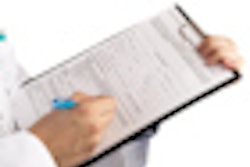
New procedure codes for preventive resin restorations, interim pontics, and interim retainers are among the eight new codes that have been added to the ADA's Code on Dental Procedures and Nomenclature (CDT) for 2011-2012.
The new codes introduce some potentially troublesome challenges for dental practitioners, according to Tom Limoli, president of Limoli and Associates and an expert on coding and dental insurance claims.
For example, general practitioners should note new code D1352, which covers preventive resin restoration (PRR) in permanent teeth in a patient with a moderate to high caries risk. It covers conservative restoration of an active cavitated lesion in a pit or fissure that does not extend into dentin and includes placement of a sealant in any radiating noncarious fissures or pits, according to Charles Blair, DDS, who specializes in insurance dental codes.
The code will probably be reimbursable for PRR on children and patients up to 16 years old, especially on newly erupted molars, Dr. Blair told DrBicuspid.com.
The ADA said it was a significant change because there had been a gap in the code that did not give providers a code describing the treatment they had rendered.
“Now the door is open.”
— Tom Limoli, president, Limoli and
Associations
According to Limoli, the new code does nothing more than identify when a sealant is still a sealant, although it also defines that some sealants can now be classified as "super sealants."
Overall, however, he called D1352 an "ill-intended and poorly designed code which has the potential for healthcare fraud and inappropriate utilization abuse written all over it."
Here is an overview of some of the other new codes:
Fixed prosthodontics: New codes for interim pontics and retainers are covered in D6254 and D6795, which can be used for identifying interim bridges when they are not entirely part of routine prosthetic services. As with any interim appliance, these codes refer strictly to maintaining the patient while healing, resolution, and other procedures are completed, Limoli said.
Maxillofacial prosthetics: New code D5992 will be for adjusting a prosthetic appliance identified in the D5900 section of the code. D5993 identifies the cleaning and maintenance of those same appliances found in the D5900 section. These codes are not intended to identify the simple adjusting and cleaning of traditional full or partial dentures, Limoli noted. D5993 is only to be used for the maintenance and cleaning of maxillofacial prosthetic appliances, according to Dr. Blair.
Oral and maxillofacial surgery: New to the oral surgery section is D7251 for identifying the intentional removal of only a portion of a tooth so as to not create a neurovascular complication. D7295 is for identifying only the harvesting of bone when it is going to be used in an autogenous grafting procedure, according to Limoli.
Endodontics: In the endodontic section, code D3354 will be used for regenerating the damaged pulp of a necrotic, as opposed to neurotic, immature permanent tooth.
This code includes removal of intracanal medication and procedures necessary to regenerate continued root development and necessary radiographs, Dr. Blair said. This procedure includes placement of a seal at the coronal portion of the root canal system. It is used when a conventional root canal is not performed.
Redefined: Clarifications were made to codes pertaining to oral and maxillofacial surgery. D7210, regarding surgical extraction, still requires removal of bone and/or sectioning of the tooth, but now the mucoperiosteal flap is no longer required, Limoli said.
He reminds dentists that it's a surgical extraction, not because it was done by a surgeon, but because bone was removed and the tooth had to be sectioned. Formerly, dentists had to make an incision and a flap, but now they don't need to make an incision. Dentists can do a flap but must still remove bone, as well as section the tooth, Limoli noted.
D7953, regarding bone replacement for ridge preservation, and D7960, regarding frenulectomy, frenectomy, and frenotomy, both have much-needed, updated descriptors, he said.
Limoli noted there may be some confusion with the redefinition of D9215, covering local anesthesia, indicating its potential submission on benefit claims, with both operative as well as surgical procedures. This code typically has never been a benefit of dental plans.
"Now the door is open," Limoli said. "Are dentists going to start charging their patients for local anesthesia? Now it's nothing more than an expansion of the procedure code, but most insurance companies are not going to pay for it separately."
He advises dentists to ignore the redefined code and not charge the patient separately for the anesthetic because it's part of doing the procedure.
Also redefined is D9420, which now includes visits to ambulatory surgical centers as well as hospitals, Limoli said.
The Code on Dental Procedures and Nomenclature, which contains approximately 500 codes, is revised every two years by the ADA's Code Revision Committee.
Three of the new codes -- D6254, D6795, and D7295 -- were added by the appeal process, the first time it was used. The ADA said it was satisfied with the appeal process because the independent decision-maker agreed with ADA representatives that all three codes were necessary for accurate reporting of procedures for patients.
"As the practice of dentistry changes, there is a need to amend existing codes to be responsive to the evolving needs of the dental profession and dental patients," the ADA said in a statement to DrBicuspid.com.



















